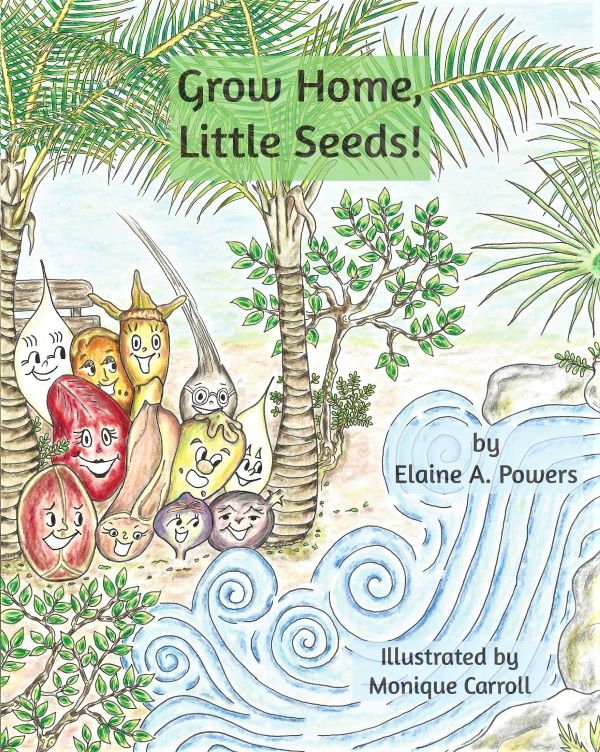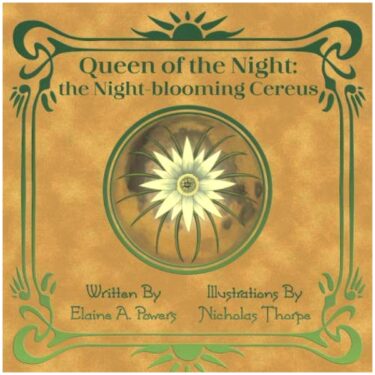A Tale of Friendship Between
the Seeds of Native Bahamian Plants
Reading Level Age 8+
25 Pages with
10-page Seed Appendix
Delightful Illustrations
in Pastel Colors
by Monique Carroll
Just like us, when seeds are born together and bonds are formed, they want to stay together. And just like our parents, the Master Gardener tells the seeds they must each go forth and find their own special place.
But, do we listen our parents when we’re newly on our own?
Join Cerise Red Mangrove, Noel Christmas Orchid, Onyx Black Mangrove, Aggie Silver Thatch Palm, Lettie Lignum Vitae, Polly Poisonwood,, Orchy Shell Orchid and Brianna Bromeliad as they do everything they can to stay together and make a forest!
Mother Nature, however, has something else in mind; and with her birds, wind and water, she helps each of the seeds find their perfect place to grow–and not too far from each other.
Just as it should be for good friends.
Want to Dazzle the World?
Bloom All Together
One Night Per Year!
QUEEN OF THE NIGHT
A NO. 1 AMAZON BOOK!
COMPLETE
BOOK DESCRIPTION HERE
~For All Ages~
Packed with Scientific Information
20 Pages with
Glossary & Coloring Page
Written in Rhyme!
Colorful illustrations of the
Striking Night-Blooming Cereus,
the Sonoran Desert and its Animals
by Nicholas Thorpe
BOOK REVIEW
BY HELENE WOODHAMS
ARIZONA DAILY STAR
Queen of the Night:
The Night-Blooming Cereus
$14.95
by Elaine A. Powers
Illustrated by Nicholas Thorpe
A perk of Sonoran-desert living is the one-night-only appearance of the Night-Blooming Cereus, a much-anticipated summer event for Tucsonans who rely on predictions from experts to know precisely when the tiny window of opportunity will open on the floral extravaganza. How in the world do the experts know? And what causes a cactus to behave this way?
With this picture book, Elaine Powers demystifies the mysterious bloom, explaining – in rhyming couplets no less – the life cycle of the plant, how to predict its flowering (when the buds reach 170-230 millimeters, stand back!), why they all flower simultaneously, and other bits of botanical lore about this intriguing plant, which spends most of the year looking like an undistinguished stick. Written for children, Powers’ book will charm and edify cactus lovers of any age. Lush illustrations by Nicholas Thorpe are a splendid accompaniment: Look for his very stern javelina on page 12 – he’s delightful.
A former laboratory biologist, Powers, who makes her home in Tucson, now writes science-based children’s books.
– Helene Woodhams is retired from Pima County Public Library, where she was literary arts librarian and coordinator of Southwest Books of the Year, the library’s annual literature review.



